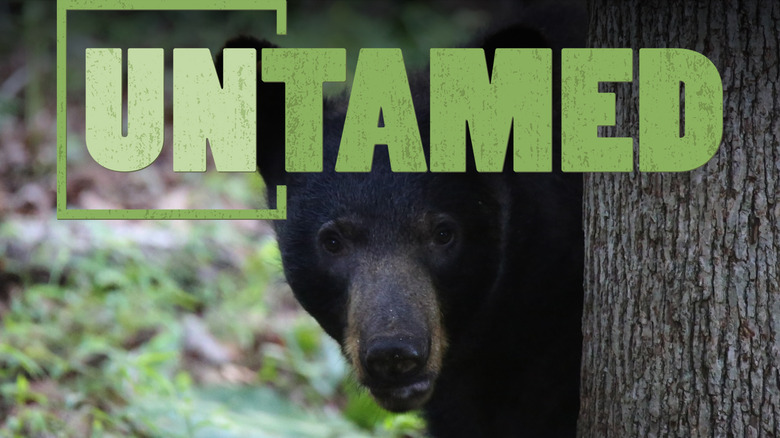- Author:
- Trish Reed
- Subject:
- STEM/STEAM, Career Connections, Health and Medical Sciences, Living Systems and Processes
- Material Type:
- Activity/Lab, Reading, Visual Media
- Level:
- Middle School, High School
- Provider:
- VPM
- Provider Set:
- UNTAMED
- Tags:
- License:
- Creative Commons Attribution
- Language:
- English
- Media Formats:
- Video
Education Standards
After the Release | UNTAMED | Wildlife Center of Virginia

Overview
Learn what happens when an animal is rehabilitated and returned to the wild. In many cases, we may never know, but there are a few ways post-release data can be gathered on former patients. This insight not only can prove that wildlife rehabilitation works, but post-release data can also contribute important information about overall wildlife populations. In this episode, join Center staff and wildlife researchers as they reflect on what some former wildlife patients have taught us.
After the Release | UNTAMED
UNTAMED: Life is Wild is a television series that offers an unprecedented behind-the-scenes look at the lifesaving work of the Wildlife Center of Virginia. Each episode features stories, videos, and interviews with Center staff, focusing on different species treated at the Center and exploring a variety of challenging wildlife issues from the perspective of a large wildlife hospital. Produced by VPM
After the Release | UNTAMED - Background Reading
After the Release: Return to the Wild
Wildlife rehabilitation handles a wide variety of animals, and all of the misfortunes they might encounter: cat attacks, lead poisoning, vehicle accidents and entanglement injuries, just to name a few.
But the Wildlife Center of Virginia has a common goal for all of its patients. When their surgery, medication and careful handling has made them strong again, they are returned to the wild. Being able to move, hunt and hide with ease means they can get back to the life they had before their mishap.
The uncertain part of this happy ending is that it can be hard to know how well each animal has fared over time. When they’re no longer under the watchful eyes of rehabilitators, what can we learn about their life after release?
The most common method is bird banding. By fastening a small, numbered band around a bird’s leg, rehabilitators and researchers can keep track of its movements in the wild. The number links back to all kinds of information about the bird (where it was initially found, what injuries it had, where it was treated, etc.) in a federal database that is updated with each sighting. And the bird doesn’t have to be recaptured to gather this data—the numbers on each band can be seen for up to 50 yards with the right lens.
When more constant input is needed, a telemetry unit can do the trick. These devices give much more information about the birds wearing them, and that information is gathered in real time. By outfitting a bald eagle with one of these units, researchers can see its location, its altitude, speed, migration habits and more.
When a bear is released, a GPS collar might be used to track its movements and monitor its adaptation to the natural environment. Because bears can become curious about trash cans and other manmade temptations, it’s important to be sure they are spending more time in their own natural habitats and not endangering themselves by becoming a nuisance. The collars aren’t safe for younger bears, since they are still growing, so those bears are more likely to get a tagged ear that works much like bird banding does.
What You Can Do!
If you find a band or device, report it to your local wildlife agency. Knowing when and where it was found contributes to a large body of knowledge about the species that wore it, and the device itself may need to be retrieved.
Support your local wildlife rehabilitators. These people work very hard to give a second chance to animals that have been sickened or injured, and their efforts have a much broader reach than that single animal.
You may be wondering what happens when an animal does not get well enough to return to the wild. In some cases, an animal is so unlikely to recover that euthanasia is the only humane solution. But in some other cases, the animal enjoys a comfortable new life as an education animal, helping nature enthusiasts of all ages better understand their wild neighbors.
Working with Wildlife
Working with Wildlife:
Are your students interested in learning more about a career working with wildlife? Whether working in wildlife medicine, rehabilitation, education, and/or conservation, the general advice from experts in this field is to get hands-on experience and get to know the professionals who are working in the areas in which they want to be involved! The Wildlife Center of Virginia has a number of resources compiled for students seeking advice on how to get started. Access these resources online at https://www.wildlifecenter.org/training-opportunities
Wildlife Center of Virginia Compendium
The Wildlife Center of Virginia compendium offers a library of materials that support each episode of UNTAMED, including patient stories and videos, additional learning resources, and worksheets and activities for students who are watching Untamed as a part of classroom learning on biology, natural history, and the environment. To access this resource, click here: https://www.wildlifecenter.org/untamed-compendium